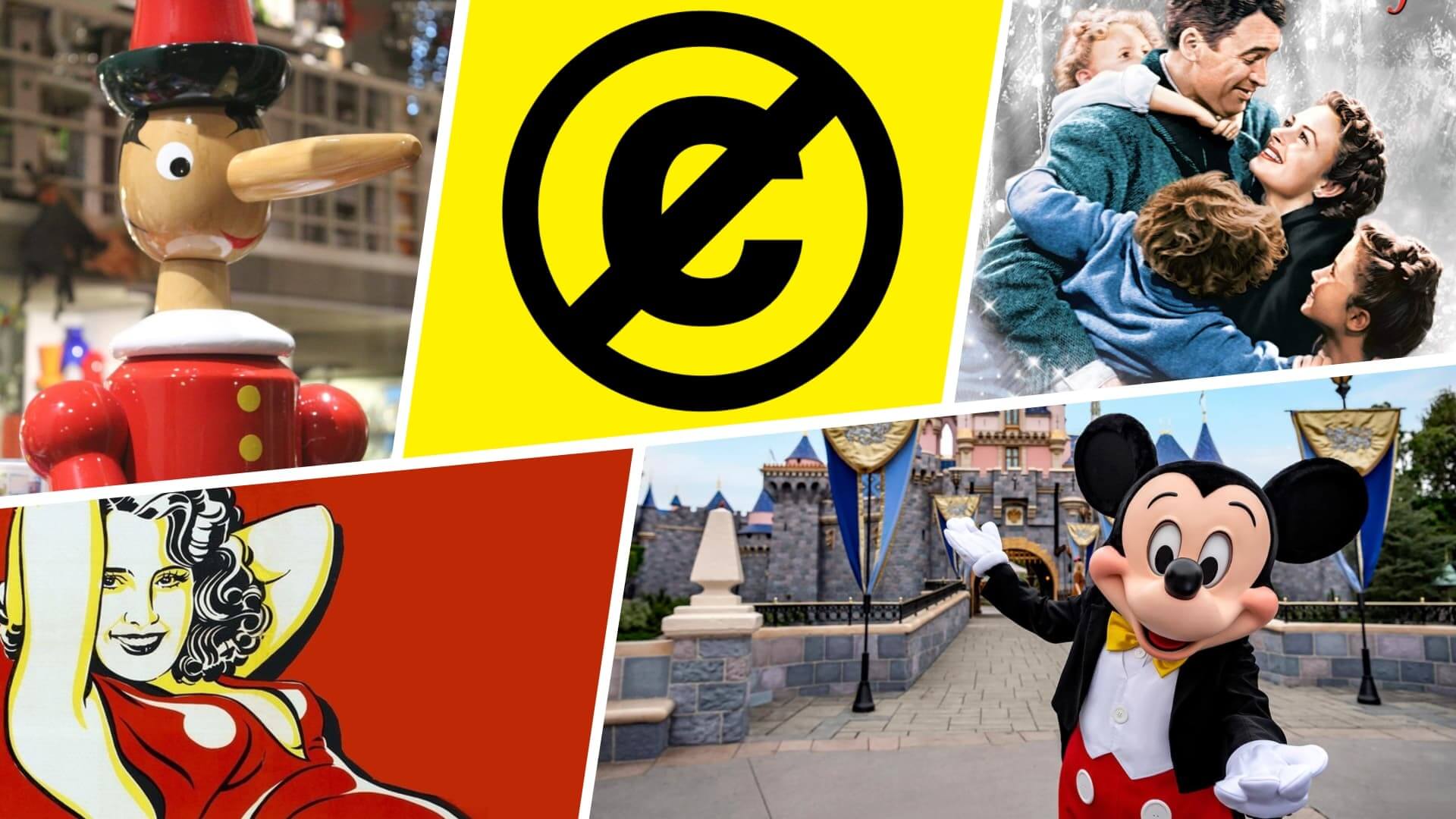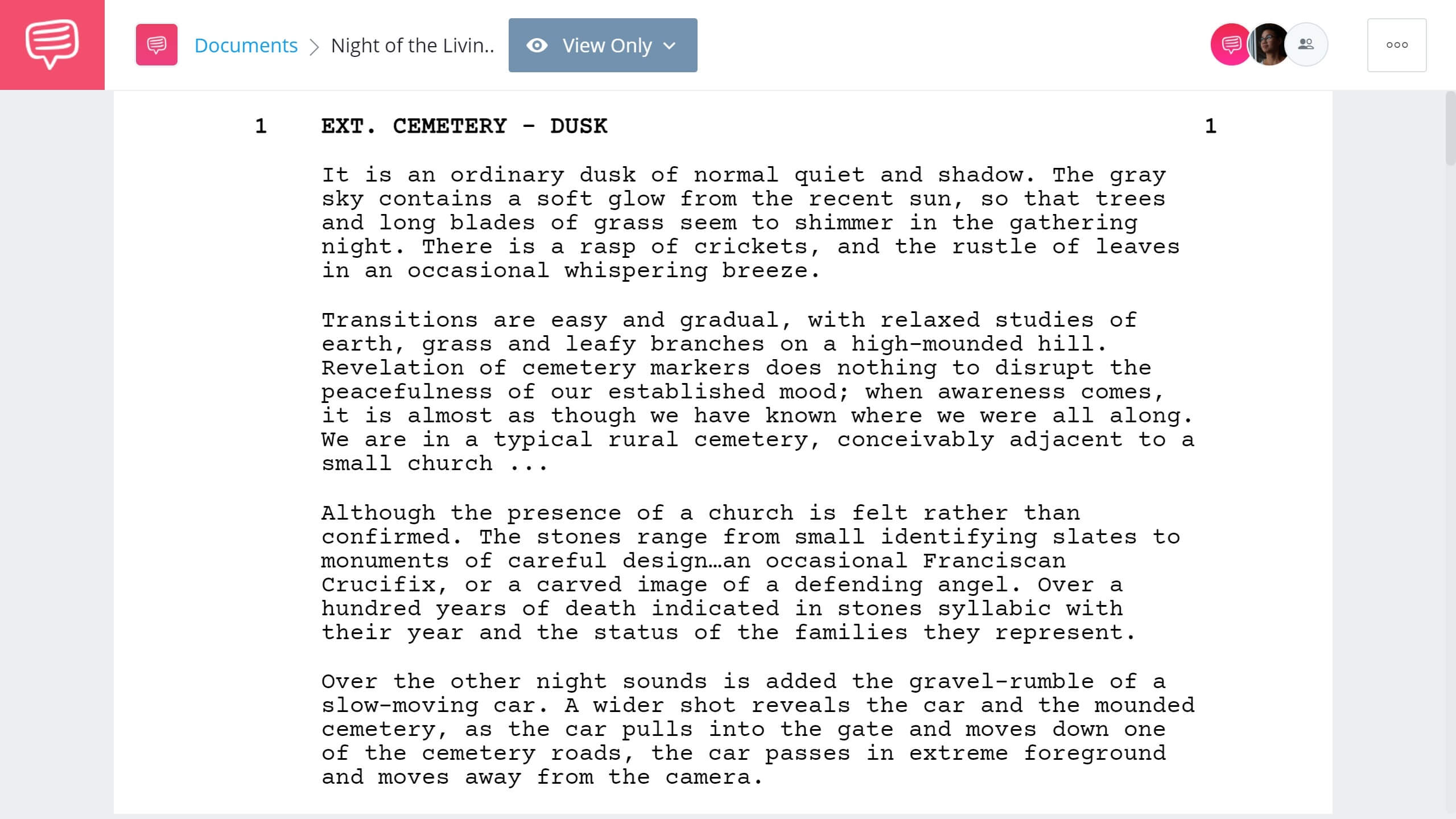Does it seem like every story imaginable has already been told? Instead of looking toward the future for your next project, why not delve into the past? Your next film could be a remix of something that’s come before. And before you get worried about Johnny Law, you’ll find many works exist within the public domain. But what is public domain and how is it used? Keep reading to see why Night of the Living Dead is free for anyone to watch.
WHAT DOES PUBLIC DOMAIN MEAN?
First, let’s define public domain
During a film’s credits, you may have seen a copyright notice. A movie is considered copyrighted as soon as it’s created and put into a tangible object. Due to current public domain laws, that little copyright gives the film protections for a very long time. So, what is public domain exactly?
PUBLIC DOMAIN DEFINITION
What is public domain?
The public domain refers to any creative work that doesn’t have any intellectual property rights applied to it. The rights may have been waived, forfeited, expired, or inapplicable from the beginning of its existence.
In the United States, any motion pictures made and featured before 1925 are permanently within the public domain. Current public domain laws state that any new films have copyrights for 95 years. This means movies released in 1925 enter the public domain in 2021.
The public domain also relates to works that came out before copyright laws were a thing. Therefore, the works of William Shakespeare, Charles Dickens, and Jane Austen are in the public domain. This allows filmmakers to adapt their works to the screen.
Public Domain Examples (Film):
- Night of the Living Dead
- Santa Claus Conquers the Martians
- It’s a Wonderful Life
- Little Shop of Horrors (1960)
- Manos: The Hands of Fate
- Reefer Madness
- Plan 9 from Outer Space
PUBLIC DOMAIN MEANING
History of the public domain
The idea of works being shared and owned by the public dates back to ancient Rome. The United States adopted these ideas into the Copyright Act of 1790, which protected works for 28 years. However, the idea of a “public domain” did not enter the public lexicon until 1896.
This is when the Supreme Court borrowed the term from French lawmakers. It quickly became the popularized term for any work not protected by copyright law. Here's a more in-depth explainer on the "in's and out's."
What is Public Domain and How is it Used? • U.S. Copyright Office
In 1909, the law changed to give creators greater flexibility in controlling their works. Creators were given the option to renew at the 28-year mark for an additional 28 years. This meant that a creator could retain the rights to their work for a total of 56 years before it entered the public domain.
However, the public domain laws has changed even more over the years. Ironically enough, the driving force behind this change is a company that benefited immensely from these laws, which makes it tricky to answer a question like, “What is considered public domain?”
How Mickey Changed the Game
Disney and the public domain
Mickey Mouse first appeared in 1928’s Steamboat Willie, which would go on to define animation for a generation. Based on copyright laws at the time, the mouse should have entered the public domain in 1984.
But Mickey Mouse was Disney’s bread and butter, and the company wasn’t willing to give up the rights so easily.
In the years leading up to 1984, Disney poured millions of dollars lobbying Congress to change copyright laws. And they were successful.
Public Domain Copyright Definition • Tech Insider
The company’s efforts were successful, and 19 additional years were added. But that still only gave Disney until 2003. With the new millennium approaching, the company resumed efforts to lobby Congress. New laws tacked on an extra 20 years to current copyright laws, meaning new works were protected for 95 years total.
That means Mickey Mouse will enter the public domain in 2023. With just a few years left, it appears as though the Mouse House doesn’t have plans to add more time to copyrights. But when all is said and done, that doesn’t mean anyone would be able to include Mickey Mouse in their works because he’s still protected by trademarks.
Due to Disney’s efforts, it will be quite a while until something like Star Wars enters the public domain. But filmmakers still have a lot of options when it comes to adapting copyright-free works.
PUBLIC DOMAIN EXAMPLES
Films adapted from these works
Hollywood has maintained a fascination with the works of William Shakespeare. The best Shakespeare movies run the gamut from direct adaptations to looser works.
Films like 10 Things I Hate About You and She’s the Man are adapted from The Taming of the Shrew and Twelfth Night, respectively. Even something like 1995’s Clueless is based off of Jane Austen’s Emma.
Why Clueless Is a Perfect Literary Teen Movie • Slate
Despite Disney’s efforts to prevent works from entering the public domain for nearly a century, the company got its start adapting copyright-free works. Snow White and the Seven Dwarfs, Pinocchio, and Alice in Wonderland were all in the public domain when Disney got its hands on them.
The public domain has helped launch studios and bring old works to a new generation. And that’s only the beginning of why it should be protected and continue to be filled with influential works.
Check out our list of the best public domain movies for inspiration.
The Pros and Cons
Benefits of the public domain
The public domain does more than just give people free stuff to read and watch. It gives people access to works they may not be able to access otherwise. A kid from a poor family may not have the funds to buy new works, but they can download the works of Shakespeare free of charge.
The public domain also helps keep characters relevant. Take Sherlock Holmes, who entered the public domain a long time ago. Over the last decade or so, there have been multiple film adaptations from different studios as well as several different TV series, including Sherlock and Elementary.
Each of these adaptations is wildly different from the next. It gives filmmakers with different voices a chance to leave their mark on iconic characters. Just think of all the stories we’ve missed out on because Superman and Batman couldn’t enter the public domain when they should have in 2013 and 2014, respectively.
Batman and Superman Free? • Cracked
Thousands of films already exist without copyrights, but many more should be in there. Who knows what kind of movies we could have gotten had filmmakers had more freedom to adapt what they wanted?
WHAT IS THE MEANING OF PUBLIC DOMAIN?
Screenwriters looking to adapt
You may have a killer screenplay idea involving Frankenstein’s monster, Sherlock Holmes, or some other copyright-free character. While you’re generally free to use these works as you please, it pays to do a little research before diving headfirst into the process.
Adaptations of Peter Pan have been met with pushback over the years. Things get complicated with this instance because some Peter Pan stories were published prior to the cutoff year to enter the public domain.
If you’re in any doubt, then you want to consult with a lawyer. Certain gray areas exist with copyrighted works, and you don’t want to step on anyone’s toes when starting out.
George Romero’s Night of the Living Dead, despite coming out in 1968, is currently without a copyright due to a failure to adequately display the copyright in the title sequence. It’s one of the most intriguing works to study under copyright law.
Horrors of Copyright • kaptainkristian
And for screenwriters who may be interested in adapting elements of Night of the Living Dead, it’s important to look at elements of the 1968 version and not the 1990 one that Romero was actually a part of so that he could reap some financial reward from the story. We imported the script into StudioBinder's screenwriting software — follow the image link to read the entire screenplay.
Night of the Living Dead Script PDF • Read Full Script
While elements of the 1968 Night of the Living Dead are open to adaptation, there are some key differences between it and the 1990 version. Therefore, it pays for screenwriters to do their due diligence first before writing anything that already exists. Entertainment lawyers can answer any questions you have and prevent you from getting caught up in a legal snafu for years.
StudioBinder’s software can help you avoid mistakes like improper spacing. But it can’t help you navigate the treacherous world of copyright law.
UP NEXT
How to Find Public Domain Script Ideas
There are numerous books, movies, and poems you can use as inspiration behind your next film idea. With a few tweaks, you can take a work that’s over 100 years old and make it applicable to the modern day. See what you can do by taking some examples from our lengthy list of works in the public domain.

